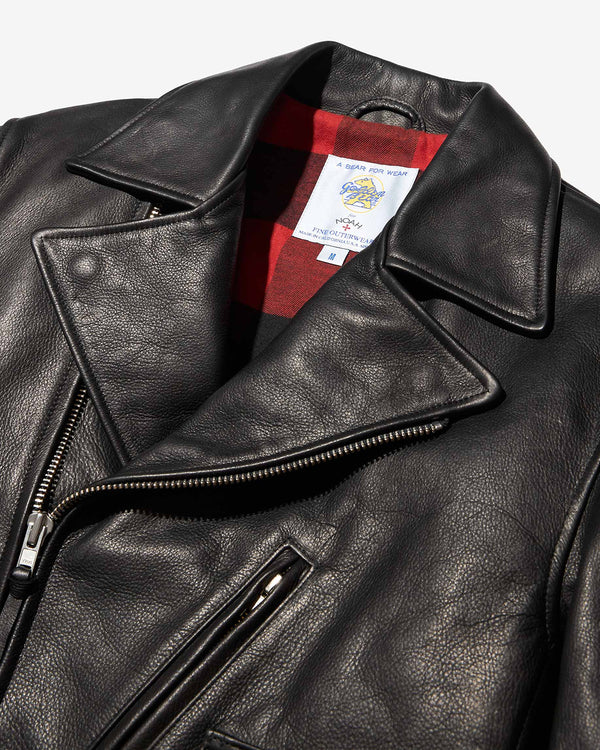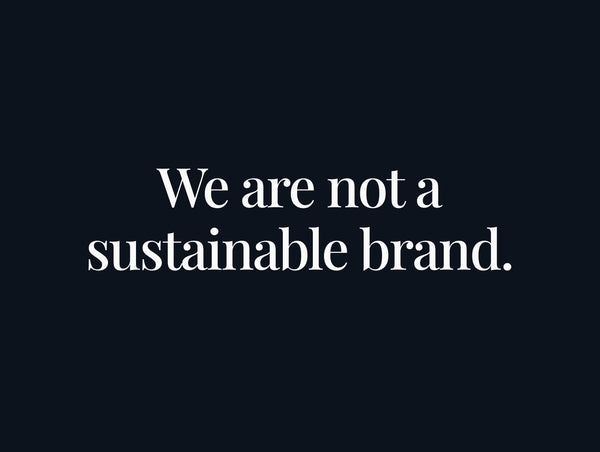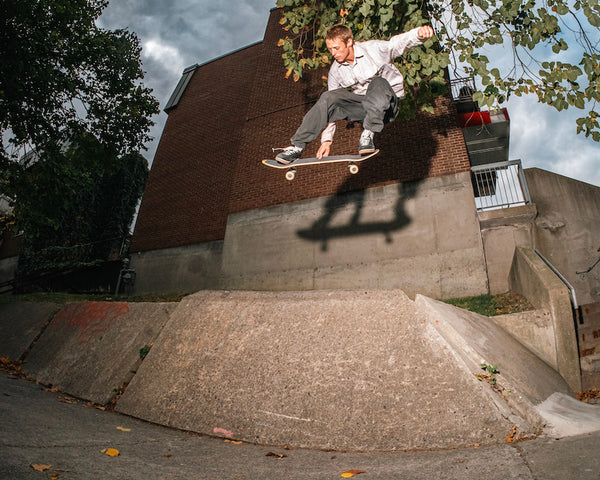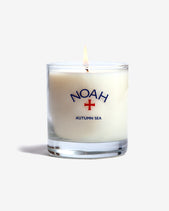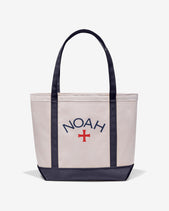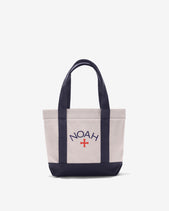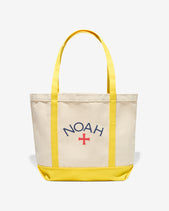
Magee of Donegal
At Noah, we’ve always held ourselves to a high standard of quality. It’s no secret that we take pride in working with manufacturers and mills around the world who understand our ethos when it comes to sourcing the highest quality fabrics that will last for years. One manufacturer that stands in a league of their own is Magee of Donegal. Operating since 1866, Magee continues to produce the highest quality fabrics in a style that is incredibly unique to them and the region they hail from.
When we think of Magee, we see them as the authority in the cloth industry. Whether you look at what they’re doing now or what they’ve done historically, it’s consistently impressive. When we go through their collections, we naturally find pieces we really like. It’s a testament to Magee’s ability to create unique and visually appealing fabrics—their creativity in developing materials, color combinations, and patterns. They’re simply exceptional. That’s why, in our opinion, if you’re buying within that visual space, specifically Donegal tweed, Magee is the go-to.
We can find similar styles from places like Japan, Italy, and elsewhere, but we always seek the genuine article. Companies like Magee inspire us because they’ve been around for so long, excelling at their craft. They do one thing, and they do it exceptionally well. It’s about a look, a feeling, quality, and consistency. So, when we look at them, we ask ourselves: how can we operate like that? How can we leverage historical knowledge to maintain consistency over time?
To get more insight into Magee of Donegal we caught up with Design Manager Susie Page to hear from her on what makes Magee so special today.
Photos by Casey Steffens

Has the business changed much since its inception in 1866?
Magee 1866 is a fifth-generation Irish family business with over 150 years of experience in designing, weaving, and tailoring luxurious fabrics and clothing in Donegal.
Magee was founded on handwoven tweed over 150 years ago when John Magee first established a small draper’s shop in Donegal, Ireland. This hard-wearing, coarse fabric was handwoven across Donegal by part-time fishermen and farmers, serving as the perfect material for withstanding the damp and cold weather often found in Northwest Ireland—a far cry from the luxurious cloths we produce today.
In 1900, Robert Temple—John Magee’s cousin and apprentice—acquired the business, and today, the third and fourth generations of the Temple family remain at the helm. Our weaving mill in Donegal Town, on the banks of the River Eske, continues to be the beating heart of everything we do at Magee. In the 1970s, power looms were introduced to the mill, allowing us to improve efficiency and develop more intricate designs to compete in the international market, which remains a priority for us today.
We are proud to uphold a tradition of weaving and manufacturing textiles in Northwest Ireland. While deeply influenced by our heritage, we continue to bring a contemporary edge to an age-old craft, constantly exploring new ways to showcase our products in an evolving market.
What about the Irish countryside inspires the Magee family and its employees?
Our location in County Donegal offers endless and ever-changing inspiration for our design team. From the rugged coastline to peaty bogs, open skies, and rolling hills, the Irish landscape provides a deep well of colors and patterns to draw from.
Donegal Tweed is an iconic part of the county’s centuries-old weaving tradition. It is unique as a woven fabric due to the contrasting colorful nepps (burrs) spun into the yarn, which is then woven in a plain or twill weave, known as Salt & Pepper or Herringbone, respectively. Rooted in the land and seascapes of Donegal, the colors were historically drawn from our surroundings. The unique Herringbone pattern is inspired by the fish caught in the Atlantic Ocean or the patterns in the sand after the tide recedes. The Salt & Pepper design reflects the speckled landscape of the countryside.
What is the allure for Magee to use natural fibers?
Our company ethos is to produce fabrics that are not only of high quality but also long-lasting. The best way to achieve this is by using natural fibers such as wool, cashmere, flax, and alpaca in our collections. These fibers are renewable and biodegradable, sourced from all-natural origins, offering a rich, soft feel that cannot be replicated. They also lend themselves beautifully to translating the colors and designs we wish to present.

What about the Irish countryside inspires the Magee family and its employees?
Our location in County Donegal offers endless and ever-changing inspiration for our design team. From the rugged coastline to peaty bogs, open skies, and rolling hills, the Irish landscape provides a deep well of colors and patterns to draw from.
Donegal Tweed is an iconic part of the county’s centuries-old weaving tradition. It is unique as a woven fabric due to the contrasting colorful nepps (burrs) spun into the yarn, which is then woven in a plain or twill weave, known as Salt & Pepper or Herringbone, respectively. Rooted in the land and seascapes of Donegal, the colors were historically drawn from our surroundings. The unique Herringbone pattern is inspired by the fish caught in the Atlantic Ocean or the patterns in the sand after the tide recedes. The Salt & Pepper design reflects the speckled landscape of the countryside.
What is the allure for Magee to use natural fibers?
Our company ethos is to produce fabrics that are not only of high quality but also long-lasting. The best way to achieve this is by using natural fibers such as wool, cashmere, flax, and alpaca in our collections. These fibers are renewable and biodegradable, sourced from all-natural origins, offering a rich, soft feel that cannot be replicated. They also lend themselves beautifully to translating the colors and designs we wish to present.

Has the business changed much since its inception in 1866?
Magee 1866 is a fifth-generation Irish family business with over 150 years of experience in designing, weaving, and tailoring luxurious fabrics and clothing in Donegal.
Magee was founded on handwoven tweed over 150 years ago when John Magee first established a small draper’s shop in Donegal, Ireland. This hard-wearing, coarse fabric was handwoven across Donegal by part-time fishermen and farmers, serving as the perfect material for withstanding the damp and cold weather often found in Northwest Ireland—a far cry from the luxurious cloths we produce today.
In 1900, Robert Temple—John Magee’s cousin and apprentice—acquired the business, and today, the third and fourth generations of the Temple family remain at the helm. Our weaving mill in Donegal Town, on the banks of the River Eske, continues to be the beating heart of everything we do at Magee. In the 1970s, power looms were introducedto the mill, allowing us to improve efficiency and develop more intricate designs to compete in the international market, which remains a priority for us today.
We are proud to uphold a tradition of weaving and manufacturing textiles in Northwest Ireland. While deeply influenced by our heritage, we continue to bring a contemporary edge to an age-old craft, constantly exploring new ways to showcase our products in an evolving market.





How has Magee stayed true to its roots while staying current in an ever-changing modern world?
When developing new products and designing our fabrics, we always consider our rich heritage by utilizing our extensive archives and balancing this with emerging trends. We aim to create collections that are authentic and true to our story while also reflecting a modern lifestyle.
To keep our fabrics relevant, we continually push the boundaries of what is possible with natural materials, exploring innovations in finishing, new fiber combinations, and contemporary design. Sustainability is a significant consideration for us, and we strive to produce our fabrics with minimal environmental impact.
At the heart of what we do is community and the people who craft the fabric. We remain committed to weaving high-quality, long-lasting natural products, leveraging knowledge passed down through generations to create unique fabrics that inspire our customers to incorporate them into their collections.

How did the dog become a part of the Magee logo?
The Irish wolfhound became a part of the Magee branding as it symbolizes integrity, a quality that strongly resonates with the brand. Magee Weaving also features a weaving shuttle in its logo, an essential tool in handweaving that carries the thread of the weft yarn. This symbol connects back to our historical association with handweaving, which is the foundation upon which the company was built.


How did the dog become a part of the Magee logo?
The Irish wolfhound became a part of the Magee branding as it symbolizes integrity, a quality that strongly resonates with the brand. Magee Weaving also features a weaving shuttle in its logo, an essential tool in handweaving that carries the thread of the weft yarn. This symbol connects back to our historical association with handweaving, which is the foundation upon which the company was built.
How has Magee stayed true to its roots while staying current in an ever-changing modern world?
When developing new products and designing our fabrics, we always consider our rich heritage by utilizing our extensive archives and balancing this with emerging trends. We aim to create collections that are authentic and true to our story while also reflecting a modern lifestyle.
To keep our fabrics relevant, we continually push the boundaries of what is possible with natural materials, exploring innovations in finishing, new fiber combinations, and contemporary design. Sustainability is a significant consideration for us, and we strive to produce our fabrics with minimal environmental impact.
At the heart of what we do is community and the people who craft the fabric. We remain committed to weaving high-quality, long-lasting natural products, leveraging knowledge passed down through generations to create unique fabrics that inspire our customers to incorporate them into their collections.

